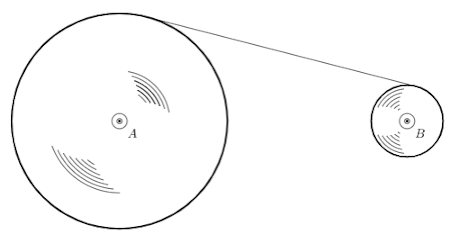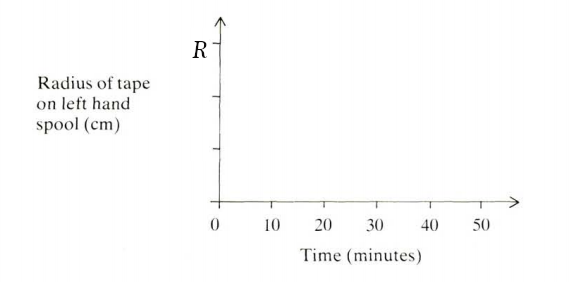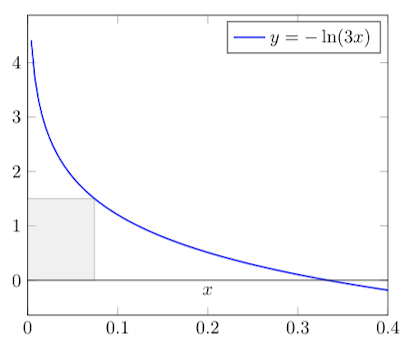MT #4: Limits and derivatives
Timings: 17:00-20:00 Hrs Date: 10 March 2021
Instructions
- You are responsible for keeping time. Email all your solutions by 20:00 Hrs IST.
- Write your answers with a dark pen on white paper.
- Find an email from me with the subject line ‘Mock test 4: Limits and derivatives’. Send your solutions (images) as replies to this email.
- Adjust/Reduce the resolution of the camera so that each image is less than 500 KB in size.
- Total marks: 100 (10x4=40 for Part A + 6x10=60 for Part B)
For students who miss the live test (members only)
Self-administer the mock test and email your solutions before 11 Mar, 23:59 Hrs. Your solutions will be evaluated but marks won’t be counted for official use in the future. Solutions submitted after 11 Mar, 23:59 Hrs will not be evaluated. As per the rules of CMI entrance exam, no calculators or log tables must be used.
Part A: Short-answer type questions
Submission file: Write answers to all the ten questions on a single sheet of paper. Email a picture of your answer sheet. Name the file as PartA.jpg.
For this part, answers must be written without any explanation.
- Suppose \(p(x)\) and \(q(x)\) are polynomials such that: \[ p(x) = (x-1)q(x) \] If \( p^{\prime}(1)=1\), what is the value of \( q(1) \)?
- Let \(D_1\) denote the set of positive one-digit numbers, \(D_3\) the set of three digit numbers and in general \(D_n\) the set of \(n\)-digit numbers. Consider the following sum for any odd \(n\): \[ S_{n} = \sum_{k_1\in D_1} \frac{1}{k_1} + \sum_{k_3\in D_3} \frac{1}{k_3} + \sum_{k_5\in D_5} \frac{1}{k_5} + \cdots + \sum_{k_n\in D_n} \frac{1}{k_n} \] As \(n\) tends to infinity, to what value does \(S_n\) tend to?
- Consider the function \(f: \mathbb{R} \rightarrow \mathbb{R}\) given by \( f(x)=(x-1)|(x-1)(x-2)|\). The function \(f\) is
- differentiable at \(x=1\) and \(x=2\).
- differentiable at \(x=1\) but not at \(x=2\).
- differentiable at \(x=2\) but not at \(x=1\).
- neither differentiable at \(x=1\) nor at \(x=2\).
- What is the smallest value of \(n\) for which the following limit exists? \[ \lim_{x \rightarrow 0} \frac{\sin^{n}x}{\cos^{4}x(1-\cos x)^{3}} \]
- We have a tape that is wound as a spool around axle \(A\). There is an axle \(B\) that winds the tape around itself at constant speed. In other words, a fixed length of tape is transfered in one minute from spool \(A\) to \(B\). Let the instantaneous radius of the spool \(A\) be \(r\). Intially, at \(t=0\) minutes, \(r=R \) cm. At \(t=50\) minutes, \(r=0\) cm. Qualitatively, sketch the value of \(r\) as a function of time.

Sketch the value of \(r\) against time.
- Let \(f_{0}(x)=(\sqrt[3]{e})^{x}\). For \(n\geq 0\), we define \(f_{n+1}(x)=f_{n}^{\prime}(x)\). Compute \( \sum_{i=0}^{\infty} f_{i}(1) \).
- Alice and Bob are standing on a playground and Alice is 400m directly East of Bob. Alice starts to walk North at a rate of 3 m/sec, while Bob starts to walk South at the same time at a rate of 7 m/sec. After 30 seconds, at what rate is the distance between Alice and Bob changing?
- Suppose \(p(x) = x^3 + x^2 + 2x + k\). Which of the following statements is true?
- \( p(x) \) has exactly one real root for any value of \(k\).
- For some real number \(k\), \(p(x)\) has more than one real root.
- Calculate the value of the infinite series: \[ \sum_{k=1}^{\infty} \frac{1}{2 k^{2}-k} \]
- Evaluate: \[ \lim_{n \rightarrow \infty} 4^{n}\left(1-\cos \left(\pi / 2^{n+1}\right) \right) \]
Part B: Subjective questions
Submission files: Each question in this part must be answered on a page of its own. Name the files as B1.jpg, B2.jpg, etc. In case you have multiple files for the same question, say B4, name the corresponding files as B4-1.jpg, B4-2.jpg, etc.
Clearly explain your entire reasoning. No credit will be given without reasoning. Partial solutions may get partial credit.

B2. A fractal region is constructed as follows. Initially, a unit square is added at \(t=1 s\). At each subsequent time step \(t\), new squares of size \(s_t\) are added to the region as follows.
For each square \(S\) that was added at time step \(t-1\):
- Add a square with side length \(s_t = s_{t-1}/2\) to each of the free corners of \(S\).

B3. Let \(x_{0}=1\) and \[ x_{n}=\frac{3+2 x_{n-1}}{3+x_{n-1}} \] for \(n=1,2, \ldots .\)
(a) Prove that the sequence converges, that is, \( \lim_{n \rightarrow \infty} x_{n} \) exists. [6 marks]
(b) Find the value of the above limit. [4 marks]
B4. Find the value of the limit: \[ \lim_{x \rightarrow 0} \frac{1}{x} \ln \left(\frac{e^{x}-1}{x}\right) \]
B5. A monic polynomial is a polynomial with leading coefficient as 1. Suppose \(p\) is a monic polynomial with real coefficients. Let \( \lim_{x \rightarrow \infty} p^{\prime \prime}(x)=\lim_{x \rightarrow \infty} p\left(\frac{1}{x}\right) \) and \( p(x) \geq p(2) \) for all \( x \in \mathbb{R} \). Find \( p(x) \).
B6. Let \(p(x)\) be a polynomial with only real roots. Show that for every \(x\): \[ p^{\prime}(x)^2 \geq p(x) p^{\prime\prime}(x) \]